Indigenous Women’s Reproductive Rights and Justice: Intersections of Gender and Race in North America’s Regimes of Assimilation and Cultural Genocide by Elise Boisvert
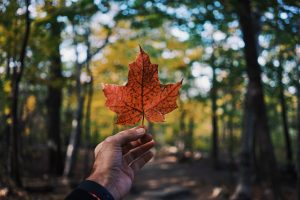 Indigenous peoples have long been excluded, assimilated, and discriminated against since colonialist settlers arrived on Turtle Island (now known as Canada). Indigenous women were viewed as the backbone of society, but when Western ideologies began to dominate, this quickly changed. Regimes began to assimilate Indigenous peoples into the Canadian state and Indigenous women’s agency began to dissipate, along with their reproductive rights and justice. As we will see through the course of this paper, many factors facilitated the subordination of Indigenous women in Western colonial society. Indigenous women’s lack of reproductive rights and justice is a clear and blatant example of the continued attempts of assimilation and cultural genocide of Indigenous peoples in North America.
Indigenous peoples have long been excluded, assimilated, and discriminated against since colonialist settlers arrived on Turtle Island (now known as Canada). Indigenous women were viewed as the backbone of society, but when Western ideologies began to dominate, this quickly changed. Regimes began to assimilate Indigenous peoples into the Canadian state and Indigenous women’s agency began to dissipate, along with their reproductive rights and justice. As we will see through the course of this paper, many factors facilitated the subordination of Indigenous women in Western colonial society. Indigenous women’s lack of reproductive rights and justice is a clear and blatant example of the continued attempts of assimilation and cultural genocide of Indigenous peoples in North America.
Colonialism
Indigenous Society Before Colonialism. Indigenous society prior to (and after) colonial contact were vastly different from Europeans in terms of ideologies, ways of knowledge, and societal norms. Unlike settler colonial society, gender roles in Indigenous communities were equal and mutual. Women were informed and respected members of Indigenous society, and played vital and viable roles in many different areas. Unlike European women, Indigenous women had a strong sense of autonomy. Women were respected and have always been the backbone and keepers of life in Indigenous communities (Ralstin-Lewis, 2005). White settler colonial societies took the form of patriarchal structure, with women viewed as lesser and subordinate. When European settlers began colonizing Turtle Island, they were perplexed by the autonomy and freedom of Indigenous women, deeming it as promiscuity (Juschka, 2017) – given how vastly different these gender roles were from their own.
Indigenous Society After Colonialism. Western ideologies of gender were represented as normative and were imposed on Indigenous peoples (Juschka, 2017). Subsequently, the status of Indigenous women as powerful, viable, and informed members of society began a downward spiral (Juschka, 2017). This was a successful tool in colonization for European settlers. Their ideologies were being enforced and adopted into Indigenous societies; gender fluidity and equivalent gender relations among Indigenous peoples were being dismantled and their culture was being divided – a strategic means to conquer a society (Juschka, 2017). Indigenous women not only became subordinate to white men, but eventually subordinate to white women, and subsequently to Indigenous men. Indigenous women were a threat to colonizers due to their traditional significance in the continuation of Native cultures (Ralstin-Lewis, 2005); European colonizers targeting Indigenous women was and is strategic and cognisant.
“Unlike settler colonial society, gender roles in Indigenous communities were equal and mutual.”
Legislation
The Indian Act. The Indian Act, created in 1876 strived to assimilate Indigenous peoples into the Canadian state and European culture. With this, all self-governing aspects of Indigenous cultures and societies were eliminated (The Native Women’s Association, 2018). In 1885 spiritual ceremonies were banned and Indigenous peoples could leave reserves without permission, in 1914 Indigenous peoples had to require special permission to wear their “costumes” to public events, in 1925 dancing was outlawed entirely, and in 1927 Indigenous peoples were banned from hiring legal representation regarding claims against the federal government without the government’s approval (The Native Women’s Association, 2018). The Indian Act stripped Indigenous peoples of their culture, power, and agency, giving settlers the upper hand in all forms of political, economic, and social environments.
The Gendered Aspects of the Indian Act. Not only did the Indian Act strip all Indigenous peoples of culture, but Indigenous women were hit hardest by this legislation. The Indian Act was a sexist tool that was used to deprive Indigenous women and their children of status if they married out of their culture and race. The Indian Act defined an Indian person as “any male person of Indian blood” and their children (The Native Women’s Association, 2018). Status women who married non-status men lost status, non-status women who married men gained status, and anyone with status who earned a degree or became a doctor, lawyer or clergyman became enfranchised but lost status (The Native Women’s Association, 2018). With these rules, women lost their culture and essence of Indigeneity if they married a white man. But an Indigenous man’s status would not be affected if he married a white woman. In fact, she would gain status. This patriarchal notion put Indigenous women at the lowest economic and political standing. In 1951 an amendment was made which would enact the “double mother rule,” which removes the status of a person whose mother and grandmother were given status through marriage. In 1985 the marrying out rule in the Indian Act is removed, but further distinctions in status are created with many more issues stemming from this (The Native Woman’s Association, 2018). Before colonial powers invaded Turtle Island, there was no question of Indigenous status or blood-quantum. The Indian Act posed many threats to Indigenous ways of knowledge, culture, and overall being. Indigenous women were at the hands of brutal patriarchal colonial ideologies that belittled their very existence – and even with the first wave of feminism beginning to take flight in the late nineteenth century, Indigenous women were left to fight their own battle against assimilation and reproductive injustice.
“Indigenous women were at the hands of brutal patriarchal colonial ideologies that belittled their very existence…”
Feminist movements
The majority of first-wave feminists were middle-class white women that, in simple terms, fought for the right to vote and the choice of when to have children. These women paved the way for many of the events that have taken place and the rights we have today; but first-wave feminist movements have been condemned for being too focused on suffrage, indifferent about gender roles, and too accepting of race and class divisions (LeGates, 2001). Indigenous women (and other women of colour) were left out of first-wave feminism movements due to the fact that many of their movements involved rights that were centered around white settler ideologies. White settler first-wave feminists in the United States drew inspiration from Indigenous women’s social, political, economic, and sexual autonomy, yet still viewed them as less capable in light of being Indigenous (Juschka, 2017). Eugenics dominated Western white settler societies and Christianity was seen as the only spiritual truth, therefore, Indigenous systems of belief and practice were seen as heathen and Indigenous women were seen as inferior (Juschka, 2017). The first wave resulted in women’s right to vote in 1918. White women gained the right to vote, that is. Indigenous women did not get the right to vote until 1960 – 42 years later (The Native American Women’s Association, 2018). The second wave of feminism (1960s-80s) focused more on women’s reproductive rights such as, abortion. Feminists fought for their right to choose when to have a child, whereas Indigenous women were struggling to ensure they could still have children. White second-wave feminists during the 1970s chose to ignore issues of sterilization abuse (which will be discussed in more detail later in this paper), and focused on a woman’s right to abortion – given that most victims of sterilization abuses were women of colour (Ralstin-Lewis, 2015). As Crenshaw (1991) states, although racism and sexism often intersect in the lives of real people, they rarely do in feminist and antiracist practices. Early feminist movements rarely focused on racism as an intersectional part of sexism – this unfortunately resulted in Indigenous women’s voices and stories being unheard during the times violence and assimilation was being brought upon them in systematic attacks by colonial powers.
“Feminists fought for their right to choose when to have a child, whereas Indigenous women were struggling to ensure they could still have children.”
Systematic dislocation of children and sterilization
Residential Schools. It is impossible to speak about Indigenous peoples’ suffering at the hands of colonial powers without acknowledging the horrors that were enacted upon children and their families that attended residential schools. Residential schools were built to incorporate Western ideologies and practices into the everyday lives of Indigenous children – to “kill the Indian in the child”. Attendance became mandatory in 1884, children were forcibly removed from their homes and were not permitted to speak their own language to practice their own religious rituals (The Native Women’s Association, 2018). This is an important part of history to acknowledge when speaking about reproductive justice due to the fact that culture is reproduced by passing it down from elder or parent to the next generation. By ripping children away from their families and stopping them from practicing their own culture, the Canadian state enacted a cultural genocide on Indigenous communities. As Juschka (2017) states, Indigenous mothering was directly challenged by the introduction of residential schools in Canada and industrial schools in the United States. Children became detached from their cultural roots and assimilated into Western culture, yet not accepted by white people. These children became alienated and Indigenous mothers and fathers lost their connection to their kin. Not only did these schools separate children from their parents, but they prevented siblings from interacting with one another to ensure that children would leave behind their Indigenous ways of being (Juschka, 2017). Family separation, sibling separation, and gender separation were mechanisms that white settler school systems used to control and assimilate Indigenous peoples (Juschka, 2017). The residential school system spread Western ideology and thought, promoted patriarchal structures and instituted the model of family formation which put Indigenous women in a role of obedience and support of the husband (Juschka, 2017). As residential school attendance began to deplete, other forms of assimilation and cultural genocide began to take its place.
Sixties and Millennial Scoops and the Child Welfare System. The Sixties and Millennial Scoops, and the Child Welfare System were and continue to be the systems that continue the legacy of the residential schools. The Sixties Scoop began in the 1960s and continued to the mid-1980s, the Millennial Scoop began in the 1980s and continues to the present day, and the Child Welfare System began in 1935 and also continues to the present day. Each of these systems were and are a system perpetuated by the Canadian state in an act to separate Indigenous children from their families and place them in white households – assimilation and cultural genocide cloaked in the act of heroic salvation. These systems are based on colonialist, racist as misguided views on Indigenous peoples of Canada (Juschka, 2017) – viewing them as incapable of being suitable parents to their children. The protection of Indigenous children by white settlers were carried out by ripping children away from their homes and families into new and foreign cultures. False advertisement of protection that these systems gave allowed for the rapid removal of Indigenous children from their homes. Children were often removed forcibly from their homes for “protection” or for their “own good,” when in reality the Canadian government and white settler community wanted to assimilate Indigenous peoples even further. The sustained involvement of white settlers in Indigenous communities takes away the agency of Indigenous mothers in their right to their own reproduction of culture and ideologies. Indigenous children were removed from their mothers, fathers, and families for reasons such as poverty, a situation imposed on them by the same government removing them (Juschka, 2017). Indigenous women’s autonomy, specifically their sexual autonomy, as well as Indigenous culture and language continued to be problematic to the Canadian state, and as a result many infants and toddlers were taken away from their mothers (Juschka, 2017). Across Canada, an estimated seventy to ninety percent of Indigenous children were taken from their homes and put into non-Indigenous homes between 1960 and 1990 (Vowel, 2016). During these systematic regimes of displacement, violence against women was being enacted upon Indigenous women’s bodies.
Sterilization. One of the most cognisant and controlled efforts of violence against Indigenous women was the use of sterilization. Indigenous women lost their reproductive rights even further during this period of intense population control and the eugenics movement by the Canadian and American government. Permanent sterilization by tubal ligation or hysterectomy was used forcibly, coercively, or unwittingly on between 3,400 and 70,000 Indigenous women from the 1960s up to 1976 (Ralstin-Lewis, 2005). From 1970 to 1980, the birthrate for Indigenous women fell at a rate 7 times greater than that of their white counterparts (Ralstin-Lewis, 2005). Governments targeted Indigenous women and girls because of their direct link to cultural reproduction. White settler colonial society believed that Indigenous societies were not as advanced as them, and therefor inferior. As the eugenics movement swept the Western nations, Indigenous communities, specifically women, were even more vulnerable to reproductive injustices. Many eugenicists, felt that whites were more advanced than other races, and viewed the higher rates of birthrates among Indigenous peoples and other people of colour with alarm – and with the long history of racism in North America, they had little trouble influencing many whites that people of colour were inferior (Ralstin-Lewis, 2005). Medical practitioners viewed Indigenous women as incapable and incompetent enough to effectively use birth control, and favoured sterilizing Indigenous women (Ralstin-Lewis, 2005). In the early 1970s, the Department of Health, Education and Welfare escalated funding programs and paid for 90% of the costs to sterilize poor Indigenous women, they circulated pamphlets among Indigenous communities praising the benefits of sterilization, and the federal government was using propaganda to suggest sterilization to Indigenous women (Ralstin-Lewis, 2005). Facilities continually violated Indigenous women’s right to informed consent. For instance, women were not informed that they possessed the right to refuse sterilization; other reports show that teenaged girls had their ovaries removed after they were told they would undergo a tonsillectomy; and coercive measures were often taken to make women sign consent forms (Ralstin-Lewis, 2005). There have been cases of Indigenous girls receiving hysterectomies as young as age 11 (Volscho, 2010). These blatant violations of human and reproductive rights show the lack of respect and dehumanization of Indigenous peoples in the eyes of Western colonial ideology and practice. These irreversible surgeries took away the ability to have children, and therefor reproduce culture. In Canada, the provinces of Alberta and British Columbia established a sexual sterilization act that operated between 1928 and 1972, and 1933 and 1973 (Juschka, 2017). While other provinces in Canada did not have sterilization acts, they equally engaged in the practice of sterilization within the eugenics movement (Juschka, 2017). The government was quick to realize that they did not want to be implicated of racial genocide, so the act was amended so that consent prior to sterilization was only necessary if the patient was not deemed “mentally defective” (Juschka, 2017). Unsurprisingly, the government took advantage of this and abused the power of being able to deem Indigenous women mentally defective or not and consequently deemed numerous women mentally defective in order to perform sterilizations without consent. As a result, more than 77% of women were defined as mentally defective (Juschka, 2017). The criteria of mental defectiveness included the following: sexual activity outside the boundary of marriage, promiscuity, and an unwillingness to be subordinate to white settlers, particularly men; these decisive factors signified the individual to be mentally defective (Juschka, 2017). An estimated 40% of all Indigenous women were sterilized during the eugenics movement (Ralstin-Lewis, 2005). This is a clear measure these governments have taken to enact a cultural genocide and assimilation. When sterilization could not be achieved, other measures were taken to ensure women could not reproduce.
Birth Control. Drugs such as DepoProvera and Norplant were used to solve the perceived “Indian problem.” Most women were not given the information about the drugs’ possible side effects, one of which is the cessation of the menstrual cycle – and for some women after discontinuing their use of DepoProvera, had to wait up to 2 years before returning to a normal menstrual cycle, while others were rendered totally infertile (Ralstin-Lewis, 2005). Menstruation is deeply important in the religious lives of both men and women in traditional Native cultures, it allows women to go through a cleanse and spiritual transformation; with the loss of their menstrual cycle, it situates them at the same spiritual level as men (Ralstin-Lewis, 2005). Significant problems with these drugs also include excessive bleeding, which is drastically problematic for Indigenous women because participation in religious activities is limited for Indigenous women whom are mensurating (Ralstin-Lewis, 2005). This removes women from their culture for prolonged periods of time and as a result, disconnects them from their family members including the children they may have had previously. A woman cannot start or stop using Norplant whenever she chooses, which places her at the hands of her healthcare provider. She loses complete autonomy and control over her reproductive health, over a drug that she most-likely did not fully consent to starting in the first place. If her doctor refuses to remove the Norplant inserts, a scenario that frequently occurs, a woman has zero control and agency of her fertility and reproduction (Ralstin-Lewis, 2005). As Ralstin-Lewis (2005) states, by attacking the traditional status of women in Indigenous nations, sterilization and the abuse of these drugs strikes at the very core value and uniqueness of women. For too long, Indigenous women’s bodies have been the battleground of colonial powers’ attempts to assimilate and control Indigenous communities.
“Governments targeted Indigenous women and girls because of their direct link to cultural reproduction.”
The Environmental Factors in Reproductive Justice
Not only have Indigenous women dealt with internal forces hindering them from bearing children, external forces have also been barriers in their reproductive rights and justice. Indigenous communities facing environmental injustices resulting from circumstances such as poverty and inadequate healthcare have consequences. Mortality rates for Indigenous populations are 60% higher than those of the U.S. white population; and Indigenous peoples have the lowest cancer survival rates among any racial group in the United States (Hoover et al., 2012). Indigenous communities are disproportionately exposed to environmental contaminants due to location and the cultural activities that put them in close contact with the environment (Hoover et al., 2012). Reproductive justice is defined as the following:
“The right to have children, not have children, and parent the children we have in safe and healthy environments – [and] is based on the human right to make personal decisions about one’s life, and the obligation of government and society to ensure that the conditions are suitable for implementing one’s decisions” (Hoover et al., 2012)
In simpler terms, reproductive justice is the right to the ability to choose when and if to have children in an environment that is safe and healthy, and does not hinder the decision. An Indigenous community in a place named Aamjiwnaang is also known as “Chemical Valley” due to being surrounded by 62 major industrial facilities within a 25km radius and manufacturers of plastics polymers and agricultural products, is one of the most contaminated reserves – located in Sarnia, Ontario, Canada (Hoover et al., 2012). This community is 12km2 and is home to about 850 Anishinaabe First Nations people, 40% of which require the use of an inhaler (Hoover et al., 2012). In 1996, hospital admissions for women were 3.11 times the expected rates for women and 2.83 times for men based on the other rates for Ontario (Hoover et al., 2012). Oral traditions in this community are passed down from grandfathers during fishing or grandmothers during berry picking and medicine gathering, but these are being lost because these activities are no longer practiced because of concerns about these foods being contaminated. Akwesasne, located at the juncture of New York, Ontario, and Quebec, the community has been impacted by 3 aluminum foundries upstream that used PCBs as hydraulic fluids; these PCBs leaked and contaminated the rivers, fish and consequently, the people (Hoover et al., 2012). PCB levels in breast milk and serum from members in the Akwesasne community have been analyzed and compared to the general public, and are elevated even after cessation of eating local fish (Hoover et al., 2012). Higher PCB concentrations are associated with decrements in cognitive and thyroid function and elevated risk of cardiovascular disease, diabetes, and hypertension, girls are more likely to have reached puberty at age 12 and men were associated with lower testosterone levels (Hoover et al., 2012). These are just a few examples of the ways Indigenous communities are at higher risks of environmental damages resulting in poor health and subsequently, dangers to their unborn children’s’ health. In Akwesasne, a midwife pushed for more health studies because of concerns of local mothers about the number of miscarriages in the communities and the possibility of the link between the contaminated breast milk (Hoover et al., 2012). Studies resulted in the confirmation that Mohawk women who ate local fish had higher levels of contaminants in their breastmilk than a control group – so it should not come as a surprise than breastfeeding rates for Indigenous women in the U.S. are well below the national average (Hoover et al., 2012). This is a testament that many Indigenous communities do not have reproductive justice. Indigenous women should feel confident that their breastmilk is safe for their children to consume, and not worry that they will have miscarriages because of the food they are eating. As Kuokkanes states, environmental pollution and the destruction of ecosystems are examples of the violations of human and reproductive rights, they undermine Indigenous peoples control of and access to their lands and resources and often compromise women’s ability to take care of their children and families due to health problems, contamination, and displacement (232). Not only are Indigenous peoples concerned about the physical reproduction of community members, but there is concern over how environmental contamination impact the reproduction of cultural knowledge (Hoover et al., 2012). Not being able to participate in activities such as fishing or picking berries and passing on knowledge to their kin, language and culture is being lost in communities affected by environmental contaminants. Indigenous communities need a clean and safe environment to enact their reproductive rights and justice.
“…reproductive justice is the right to the ability to choose when and if to have children in an environment that is safe and healthy…”
Conclusion
Indigenous women have been the location of violence in regards to reproductive health and justice since first contact with settler colonialists. Residential schools and other systems that removed children from their homes and families took away Indigenous mother’s agency and ability to reproduce their culture. Colonialism was perpetuated with these regimes of assimilation and cultural genocide – and Indigenous women and girls suffered at the hands of healthcare practitioners for decades. Feminist movements, while in many ways paved the way and made great changes for white women, left Indigenous women’s sufferings untouched and unacknowledged, allowing for the sustained development of the eugenics movement to enact their forced and coerced sterilizations of Indigenous women. While white women were praising their new-found freedom over reproductive rights during the 1960s and 1970s, Indigenous women were being targeted by medical practitioners with sterilization and birth control. While a battle was being waged on Indigenous women’s’ bodies from the inside, another battle was being forced upon them from the outside. Environmental factors have been a constant issue in reproductive justice for Indigenous peoples. Contaminants in the environment has affected women and their unborn children, resulting in lack of confidence in their breastmilk, health issues in adults and children, and loss of culture. Yet with all of this in mind, it is very important to acknowledge the strength and resiliency of Indigenous peoples and culture. Through the centuries of colonization, assimilation and genocide they have been subjected to, Indigenous communities continue to thrive and flourish in spite. But this does not mean the fight is over. Indigenous women are still at risk of reproductive injustice and Indigenous communities are facing inequalities that will and do result in cultural genocide. Indigenous women’s lack of reproductive rights and justice is a clear example of the continued attempts of assimilation and cultural genocide of Indigenous peoples in North America.
References
Crenshaw, K. (1991). Mapping the margins: Intersectionality, identity politics, and violence against women of color. Stanford Law Review, 43(6), 1241-1299. https://doi.org/10.2307/1229039.
Hoover, E., Cook, K., Plain, R., Sanchez, K., Waghiyi, V., Miller, P., Dufault, R., Sislin, C., & Carpenter, D. O. (2012). Indigenous peoples of North America: Environmental exposures and reproductive justice. Environmental Health Perspectives, 120(12), 1645-1649. https://www.jstor.org/stable/23323091.
Juschka, D. (2017). Indigenous women, reproductive justice, and Indigenous feminisms: A narrative. In, Listening to the beat of our drum (pp. 13-45). Demeter Press. https://jstor.org/stable/j.ctt1rrd9q9.7.
Kuokkanen, R. (2012). Self-determination and Indigenous women’s rights are the intersection of international human rights. Human Rights Quarterly, 34(1), 225-250. https://www.jstor.org/stable/41345477.
LeGates, M. (2001). Chapter eight: Issues in first-wave feminism. In, In their time: A history of feminism in western society (1st ed., pp. 237-280). Routledge. https://doi.org./10.4324/9780203824399.
Ralstin-Lewis, M. (2005). The continuing struggle against genocide: Indigenous women’s reproductive rights. Wicazo Sa Review, 20(1), 71-95. https://www.jstor.org/stable/4140251.
The Native Women’s Association. (2018). The Indian Act said what? https://www.nwac.ca/browse/
Volscho, T. W. (2010). Sterilization and pan-ethnic disparities of the past decade: The continued encroachment on reproductive rights. Wicazo Sa Review, 25(1), 17-31. https://www.jstor.org/stable/40891307.
Vowel, C. (2016). Indigenous writes: A guide to First Nations, Métis & Inuit issues in Canada. Highwater Press.
About the author Elise Boisvert
 “I was born and raised in Lake Country, BC, Canada. I have always enjoyed education on topics that move towards a broader understanding of the complex relationships of the world around me; and attending UBCO has allowed me to explore and research a variety of topics that enable this. I am a 4th year Arts student with a major in Cultural Studies and a minor in Sociology. I am taking 5 years for my degree as I am unsure what path I want to take after post-secondary. My research interests include feminism, Indigenous matters, and disability studies while using an intersectional lens. I believe this topic is important in the facilitation of inclusivity and equity as it addresses the inequalities and discrimination Indigenous peoples of Canada face in the continuation of settler colonialism. On the University of British Columbia’s Okanagan campus, we study, work, and live on the unceded territory of the Syilx Nation. It is imperative to acknowledge the ways in which settlers have enacted an assimilation and genocide of Indigenous culture by ignoring Indigenous women’s reproductive rights and justice through an intersectional lens. The information provided in my work is essential in the movement towards decolonization: education, acknowledgement, responsibility and in time, reconciliation.”
“I was born and raised in Lake Country, BC, Canada. I have always enjoyed education on topics that move towards a broader understanding of the complex relationships of the world around me; and attending UBCO has allowed me to explore and research a variety of topics that enable this. I am a 4th year Arts student with a major in Cultural Studies and a minor in Sociology. I am taking 5 years for my degree as I am unsure what path I want to take after post-secondary. My research interests include feminism, Indigenous matters, and disability studies while using an intersectional lens. I believe this topic is important in the facilitation of inclusivity and equity as it addresses the inequalities and discrimination Indigenous peoples of Canada face in the continuation of settler colonialism. On the University of British Columbia’s Okanagan campus, we study, work, and live on the unceded territory of the Syilx Nation. It is imperative to acknowledge the ways in which settlers have enacted an assimilation and genocide of Indigenous culture by ignoring Indigenous women’s reproductive rights and justice through an intersectional lens. The information provided in my work is essential in the movement towards decolonization: education, acknowledgement, responsibility and in time, reconciliation.”

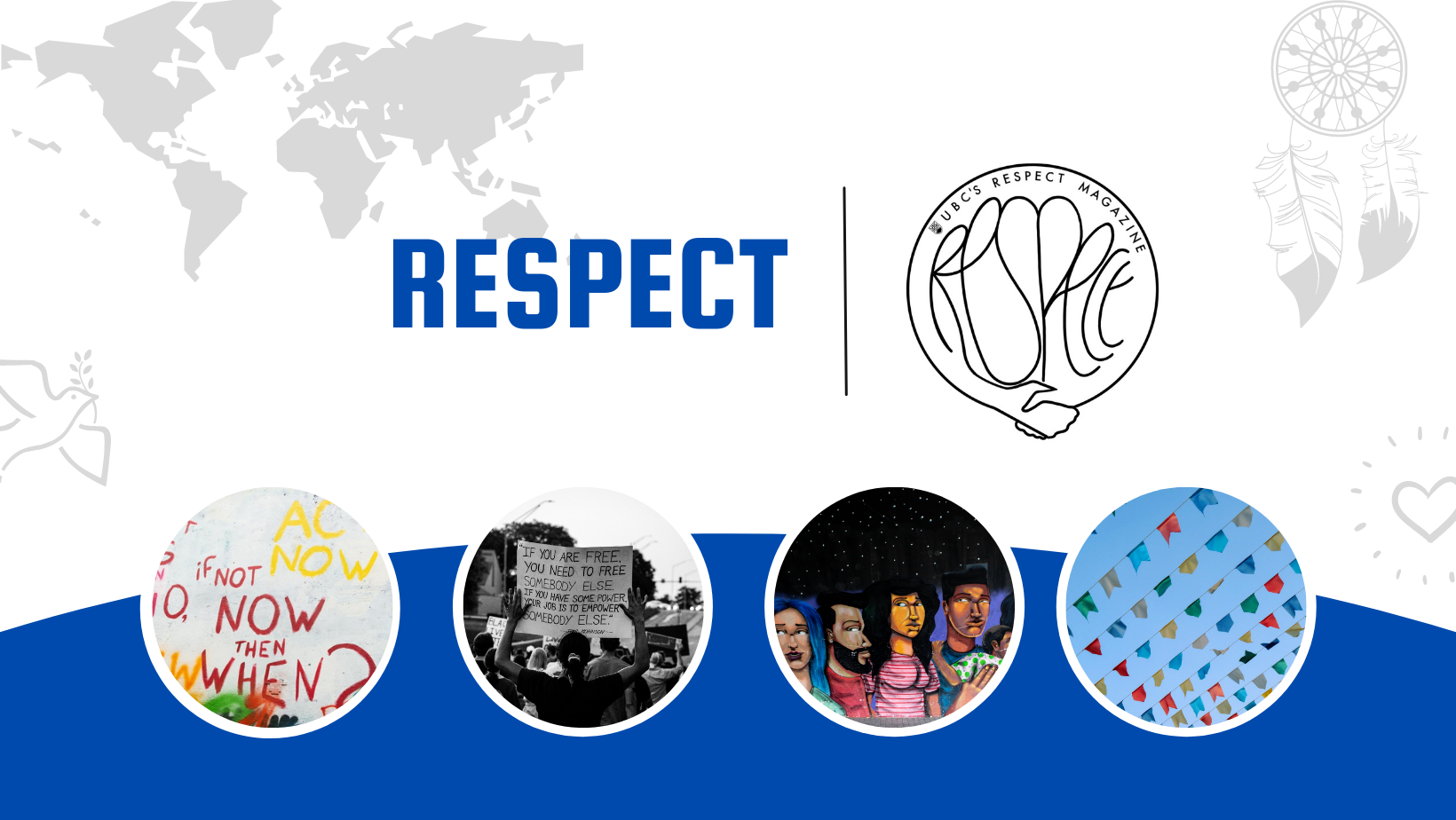
 On Diwali, people decorate their homes with lights and make colorful rangoli’s (patterns made on the floor with colors)
On Diwali, people decorate their homes with lights and make colorful rangoli’s (patterns made on the floor with colors)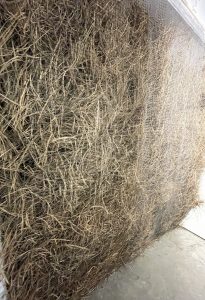 Using pine needles, I built a wall to embody the restrictions the Islamic Republic imposed upon Iranian people.
Using pine needles, I built a wall to embody the restrictions the Islamic Republic imposed upon Iranian people.
 In Farsi, the word for basil is ‘Reyhan’, which is also a common female name, so, basil seeds and the gelatinous mass they create upon contact with water are embodying female kinship networks. The way that basil seeds swell twice their size and bond together upon coming into contact with water is representative of the misogynistic fears surrounding the contagious nature of women’s drive for freedom – if one woman is fighting for it, she might ‘infect’ other women around her with the same ideas.”
In Farsi, the word for basil is ‘Reyhan’, which is also a common female name, so, basil seeds and the gelatinous mass they create upon contact with water are embodying female kinship networks. The way that basil seeds swell twice their size and bond together upon coming into contact with water is representative of the misogynistic fears surrounding the contagious nature of women’s drive for freedom – if one woman is fighting for it, she might ‘infect’ other women around her with the same ideas.”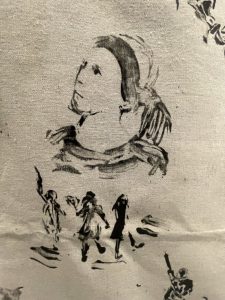 Nasim is currently working on her new project about women’s rights in Iran which is the continuation of her previous works and is a network that depicts the layout of an Iranian traditional gym called Zoorkhaneh (The House of strength). In Zoorkhaneh, a variety of tools are utilised, including Meel, Zarb and Zang (drum and bell), Kabbadeh (bow and chain), Sang (shield), and Takhteh Shena (Push-up Board). To construct the Zoorkhaneh structure, she is creating some of this equipment out of natural elements including wood, basil seeds, and sugar, as well as creating some paintings and video art.
Nasim is currently working on her new project about women’s rights in Iran which is the continuation of her previous works and is a network that depicts the layout of an Iranian traditional gym called Zoorkhaneh (The House of strength). In Zoorkhaneh, a variety of tools are utilised, including Meel, Zarb and Zang (drum and bell), Kabbadeh (bow and chain), Sang (shield), and Takhteh Shena (Push-up Board). To construct the Zoorkhaneh structure, she is creating some of this equipment out of natural elements including wood, basil seeds, and sugar, as well as creating some paintings and video art. 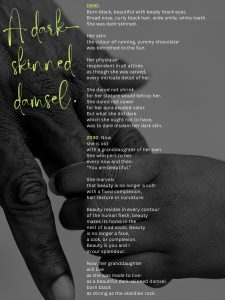 1930:
1930:
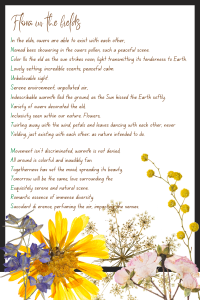 I
I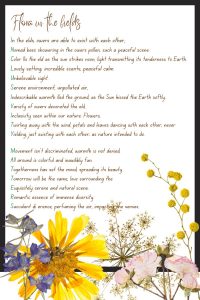
 Indigenous peoples have long been excluded, assimilated, and discriminated against since colonialist settlers arrived on Turtle Island (now known as Canada). Indigenous women were viewed as the backbone of society, but when Western ideologies began to dominate, this quickly changed. Regimes began to assimilate Indigenous peoples into the Canadian state and Indigenous women’s agency began to dissipate, along with their reproductive rights and justice. As we will see through the course of this paper, many factors facilitated the subordination of Indigenous women in Western colonial society. Indigenous women’s lack of reproductive rights and justice is a clear and blatant example of the continued attempts of assimilation and cultural genocide of Indigenous peoples in North America.
Indigenous peoples have long been excluded, assimilated, and discriminated against since colonialist settlers arrived on Turtle Island (now known as Canada). Indigenous women were viewed as the backbone of society, but when Western ideologies began to dominate, this quickly changed. Regimes began to assimilate Indigenous peoples into the Canadian state and Indigenous women’s agency began to dissipate, along with their reproductive rights and justice. As we will see through the course of this paper, many factors facilitated the subordination of Indigenous women in Western colonial society. Indigenous women’s lack of reproductive rights and justice is a clear and blatant example of the continued attempts of assimilation and cultural genocide of Indigenous peoples in North America. “I was born and raised in Lake Country, BC, Canada. I have always enjoyed education on topics that move towards a broader understanding of the complex relationships of the world around me; and attending UBCO has allowed me to explore and research a variety of topics that enable this. I am a 4th year Arts student with a major in Cultural Studies and a minor in Sociology. I am taking 5 years for my degree as I am unsure what path I want to take after post-secondary. My research interests include feminism, Indigenous matters, and disability studies while using an intersectional lens. I believe this topic is important in the facilitation of inclusivity and equity as it addresses the inequalities and discrimination Indigenous peoples of Canada face in the continuation of settler colonialism. On the University of British Columbia’s Okanagan campus, we study, work, and live on the unceded territory of the Syilx Nation. It is imperative to acknowledge the ways in which settlers have enacted an assimilation and genocide of Indigenous culture by ignoring Indigenous women’s reproductive rights and justice through an intersectional lens. The information provided in my work is essential in the movement towards decolonization: education, acknowledgement, responsibility and in time, reconciliation.”
“I was born and raised in Lake Country, BC, Canada. I have always enjoyed education on topics that move towards a broader understanding of the complex relationships of the world around me; and attending UBCO has allowed me to explore and research a variety of topics that enable this. I am a 4th year Arts student with a major in Cultural Studies and a minor in Sociology. I am taking 5 years for my degree as I am unsure what path I want to take after post-secondary. My research interests include feminism, Indigenous matters, and disability studies while using an intersectional lens. I believe this topic is important in the facilitation of inclusivity and equity as it addresses the inequalities and discrimination Indigenous peoples of Canada face in the continuation of settler colonialism. On the University of British Columbia’s Okanagan campus, we study, work, and live on the unceded territory of the Syilx Nation. It is imperative to acknowledge the ways in which settlers have enacted an assimilation and genocide of Indigenous culture by ignoring Indigenous women’s reproductive rights and justice through an intersectional lens. The information provided in my work is essential in the movement towards decolonization: education, acknowledgement, responsibility and in time, reconciliation.”